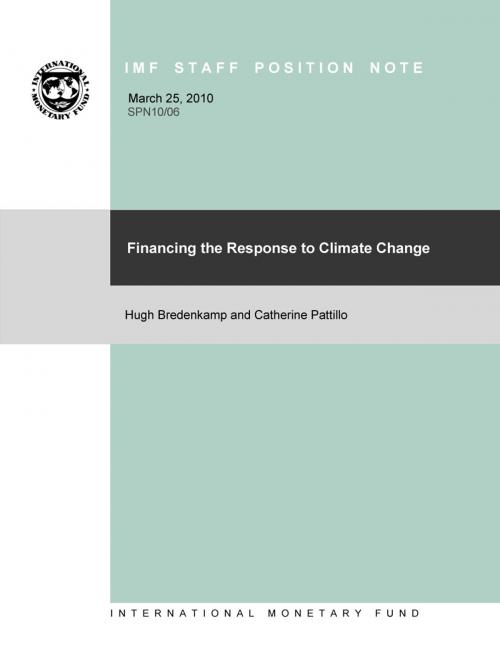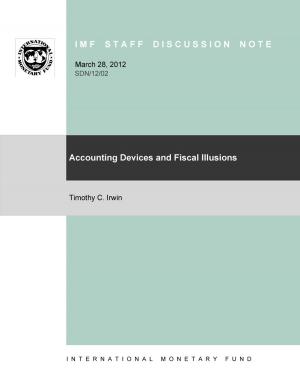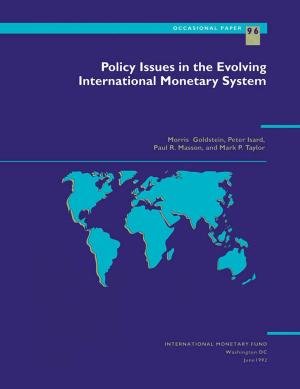Financing the Response to Climate Change (EPub) (PDF Download)
Business & Finance, Economics, Money & Monetary Policy, Macroeconomics| Author: | Catherine Ms. Pattillo, Hugh Mr. Bredenkamp | ISBN: | 9781452764450 |
| Publisher: | INTERNATIONAL MONETARY FUND | Publication: | March 25, 2010 |
| Imprint: | INTERNATIONAL MONETARY FUND | Language: | English |
| Author: | Catherine Ms. Pattillo, Hugh Mr. Bredenkamp |
| ISBN: | 9781452764450 |
| Publisher: | INTERNATIONAL MONETARY FUND |
| Publication: | March 25, 2010 |
| Imprint: | INTERNATIONAL MONETARY FUND |
| Language: | English |
This note outlines a scheme for mobilizing financing to help developing countries confront the challenges posed by climate change. The idea is to create a “Green Fund” with the capacity to raise resources on a scale commensurate with the Copenhagen Accord ($100 billion a year by 2020). By providing a unified resource mobilization framework, with up-front agreement on burdensharing and the capacity to meet the financing needs identified at Copenhagen, the Green Fund could facilitate progress toward a binding global agreement on reducing greenhouse gas emissions and allow developing countries to begin scaling up their climate change responses without delay. To achieve the necessary scale, the Green Fund would use an initial capital injection by developed countries in the form of reserve assets, which could include SDRs, to leverage resources from private and official investors by issuing low-cost “green bonds” in global capital markets. Contributors could agree to scale their equity stakes in proportion to their IMF quota shares, making these the “key” for burden sharing among the contributing countries. Since much of the financing would need to be provided ultimately as grants or highly concessional loans, the fund would also need to mobilize subsidy resources from contributors. Governments would likely require new sources of fiscal revenue for this purpose, including from carbon taxes and expanded carbon-trading schemes, which may take time to put in place. In the interim, the Green Fund could cover its subsidy needs from bond proceeds, interest income on its reserve asset capital base, and/or revenues from other innovative international tax schemes. Resources mobilized by the Green Fund could be channeled through existing climate funds, or via newly created special-purpose disbursement facilities. We are not proposing that the IMF itself would create, finance, or manage the Green Fund. The ideas set out in this note are being offered purely for consideration by the international community, and as a contribution to the broader public debate.
This note outlines a scheme for mobilizing financing to help developing countries confront the challenges posed by climate change. The idea is to create a “Green Fund” with the capacity to raise resources on a scale commensurate with the Copenhagen Accord ($100 billion a year by 2020). By providing a unified resource mobilization framework, with up-front agreement on burdensharing and the capacity to meet the financing needs identified at Copenhagen, the Green Fund could facilitate progress toward a binding global agreement on reducing greenhouse gas emissions and allow developing countries to begin scaling up their climate change responses without delay. To achieve the necessary scale, the Green Fund would use an initial capital injection by developed countries in the form of reserve assets, which could include SDRs, to leverage resources from private and official investors by issuing low-cost “green bonds” in global capital markets. Contributors could agree to scale their equity stakes in proportion to their IMF quota shares, making these the “key” for burden sharing among the contributing countries. Since much of the financing would need to be provided ultimately as grants or highly concessional loans, the fund would also need to mobilize subsidy resources from contributors. Governments would likely require new sources of fiscal revenue for this purpose, including from carbon taxes and expanded carbon-trading schemes, which may take time to put in place. In the interim, the Green Fund could cover its subsidy needs from bond proceeds, interest income on its reserve asset capital base, and/or revenues from other innovative international tax schemes. Resources mobilized by the Green Fund could be channeled through existing climate funds, or via newly created special-purpose disbursement facilities. We are not proposing that the IMF itself would create, finance, or manage the Green Fund. The ideas set out in this note are being offered purely for consideration by the international community, and as a contribution to the broader public debate.















